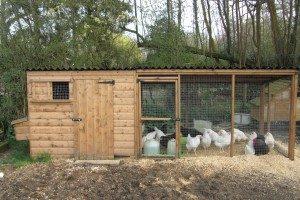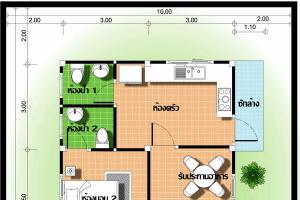Designed to transport heat from heat sources to consumers.
Heating network belong to linear structures and are one of the most complex utility networks . A design for a heating network must include calculations for strength and temperature deformations. An integral part heating network project there must be an architectural and construction part (AS) and reinforced concrete or metal constructions(KZh, KM), in which fasteners, channels, supports or overpass are developed (depending on the installation method).
Heat networks can be divided according to the following criteria:
1. According to the nature of the transported coolant:
- water heating networks. Typically, the installation and design of such heating networks involves the number of pipelines being a multiple of two, because in water mode, a return pipeline is always provided, with a coolant of the same mass flow rate, but with a lower potential. Water heating networks can be divided according to the number of pipelines laid (2 pipes; 4 pipes, etc.);
- steam heating networks. The design of steam heating networks (especially saturated steam) is complicated by the occurrence of associated condensate, especially in long routes. No less of a problem when laying steam heating networks is the temperature deformation of pipes.
2. According to the installation method:
- duct heating networks. The design of duct heating networks is carried out if it is necessary to protect pipelines from the mechanical influence of soil and the corrosive influence of soil. Channel walls facilitate the operation of pipelines, therefore the design of channel heating networks is used for coolants with pressures up to 2.2 MPa and temperatures up to 350°C. - channelless. When designing a channelless installation, pipelines operate under more difficult conditions, since they take up additional soil load and, with unsatisfactory protection from moisture, are susceptible to external corrosion. In this regard, the design of heating networks in this way of installation is provided for at a coolant temperature of up to 180°C.
- air (above ground) heating networks. The design of heating networks using this method of installation is most widespread in the territories of industrial enterprises and in areas free of buildings. The above-ground method is also designed in areas with high level groundwater and when laying over areas with very rough terrain.
3. In relation to diagrams, heating networks can be:
- main heating networks. Heating networks, always transit, without branches, transporting coolant from the heat source to distribution heating networks;
- distribution (quarter) heating networks. Heating networks that distribute coolant throughout a designated quarter, supplying coolant to branches to consumers;
- branches from distribution heating networks To individual buildings and structures. The separation of heating networks is established by the project or operating organization.
Today, heating networks are classified according to the principle of centralization. This implies a division of types of heating networks into centralized and decentralized.
The essence of the operation of centralized heating networks is to transfer heat (hot water in this case) from a separate powerful heat source to a number of end consumers that are separated from each other. Their systems, which are supplied separately to each living space, are not mixed, but they are all tied to a single source - the center of heat.
The direct coolant in the pipes is natural gas, hot water, but the cold also takes part. There are only three main links: a centralized source that transfers heat through pipes (the second link in the chain) to consumers (the third link). Everything is simple, because it is tied to a single heat supply center, usually from the boiler room.
A decentralized network is different in that each end consumer here has its own heat source. Decentralized heating networks include heating networks of private sectors, where all users are connected to one large main line, but have their own heat source - a gas boiler.
Such a decentralized system has a number of huge advantages, because each consumer can regulate the gas supply power to his boiler at any time.
In such a decentralized heating system, the consumer does not need to wait for the temperature in the home to break the records of the Pole of Cold in Oymyakon. He decides for himself when his personal heating season. Every owner of a private house can properly heat his house, even in mid-July, if he wishes.
IN winter time the temperature can be increased as much as the boiler’s power is sufficient (and modern boilers are very powerful). True, you will have to pay a little more, but your health is worth it. Again, there is an opportunity to save money. If you want to pay the minimum, then you can heat the room using a decentralized heating network. Everyone sets their own temperature that is comfortable for life and budget. But judging by observations, even the poor part of the population would prefer to skip a couple of dinners, but heat the house properly.
Another good thing about a decentralized network is that if someone has an accident, even an explosion, then all other consumers are never completely disconnected from the network. They can reduce the pressure of the gas supply for a couple of hours, but turn it off completely, there is no need.
Sometimes even autonomous sources heating, but this is not entirely true, since the principle of their operation is different, and such a heat source has nothing to do with the main network. It is more similar in its action and characteristics to a generator, since there are no common pipes connecting to it from the outside.
Therefore, the classic classification of heating networks includes only two points and is characterized exclusively by methods of supplying heat to an individual consumer.
There are also types of classification of heating networks.
The thermal network is a pipeline system that is needed for the transfer and distribution of water or steam (hot) with a centralized type of heat supply. The installation method divides heating networks into overhead and underground. The latter, in turn, are divided according to the installation method into ductless and ducted.
Channel laying of heating networks
Provides a channel into which pipes are laid. The channel itself is made of concrete blocks.

With this method, the cost of the project increases due to the cost of channels and their installation.
Ductless heating network installation

Ductless laying of heating mains implies the location of pipelines directly in the ground. Today this method is the most cost-effective. In this case, channelless laying, as a rule, uses shaped products And pipes in a special type of insulation - polyurethane foam in a polyethylene shell and foam polymer PPM, also called shell-free.
The unique physical and mechanical properties of polyurethane foam (the lowest thermal conductivity among existing thermal insulators and the resulting minimum insulation thickness) made it possible to create a truly unique technology for insulating pipelines in polyurethane foam. The operational guarantees of polyurethane foam, according to manufacturers’ statements, are more than 30 years with full preservation of properties. At the same time, PPU insulation will withstand temperatures up to 130°C, and if the exposure is short-term, then up to 150°C (if double-layer insulation is used, higher temperatures are possible). Of such a type pipe insulation It is also resistant to moisture, it has durable and high adhesion, both to the surface of the pipe itself and to the waterproof shell.

The material is characterized by high mechanical strength and is inert to acidic and alkaline environments, reliably protects the pipe itself both from external corrosion and from chemically aggressive environments, thereby significantly extending its service life. It should be noted that polyurethane foam is completely non-toxic and absolutely safe for people.
Polymineral foam (PPM) thermal insulation is essentially PU foam thermal insulation with additionally introduced mineral fillers (for example, quartz sand).
Comparing heat pipes with PPM insulation with polyurethane foam, you can see the following differences:
- increased heat resistance of the first - up to plus 150°C;
- no need to use anti-corrosion protection for pipes.

The main advantages of the above piping systems are:
- increase in operational life up to 3 times (up to 35 years and more);
- reduction of heat loss to 2.5% (the existing rate is 20%);
- reduction of operating costs by at least 10 times;
- reduction of expenses for renovation work heating mains no less than 2 times;
- reduction of capital costs when laying new heating mains by 1.2–1.3 times and a 3-fold reduction in the time allotted for construction.
The price of work on the establishment, relocation of heating networks and replacement of engineering internal networks depends directly on what kind of work and in what volume is needed (on the terms of reference for the work), contact a technical specialist for a detailed discussion of the cost.
And I would like to note that with any method of laying heating networks, the pipeline fittings used are very important, namely its quality, because the reliability of network operation and the quality of services provided directly depends on this. It is very important to select and install reliable control and steam valves: valves, taps, gate valves and locks. Nowadays, a lot of manufacturers have appeared, both Russian and from China, but here the quality of the product should play a role, not its price, remember this, because experience shows that it is better to use proven manufacturers rather than cheap ones.
For reliable connection of pipelines with fittings, various steel flanges are used depending on the pressure. The quality of the product also plays a big role here. If you are in doubt about which connection you need to use, you can read the material types and types of flange connections where everything is described in detail, or here everything is also described here, what standard sizes of flanges are available and how to make a choice based on the available data.
In order to order or buy any pipeline fittings you can go to the store and make a choice.
Heat consumers. Thermal consumption refers to the use of thermal energy for a variety of domestic and industrial purposes: heating, ventilation, air conditioning, hot water supply, technological processes.
Heat consumers, based on the nature of their load over time, can be divided into seasonal and year-round. Seasonal consumers include heating, ventilation and air conditioning systems, and year-round consumers include hot water supply systems and technological devices. Thermal loads consumers do not remain constant.
Heat consumption for heating, ventilation and air conditioning depends mainly on climatic conditions: outside air temperature, wind direction and speed, air humidity, etc. Of these factors, outside air temperature is of primary importance. Seasonal load has a relatively constant daily schedule and a variable annual schedule. Heating and ventilation are winter heat loads; air conditioning requires artificial refrigeration in summer.
The load of hot water supply depends on the degree of improvement of residential and public buildings, the operating mode of baths, laundries, etc. Technological heat consumption depends mainly on the nature of production, the type of equipment, and the type of products produced.
Hot water supply and process load have a variable daily schedule, and their annual charts to some extent depend on the time of year. Summer loads are usually lower than winter ones due to higher high temperature tap water and processed raw materials, as well as due to lower heat losses of heat pipes and process pipelines.
Maximum heat flows for heating, ventilation and hot water supply of residential, public and industrial buildings must be taken according to the relevant projects.
> CLASSIFICATION OF HEAT NETWORKS
Depending on the number of heat pipes laid in parallel, heating networks can be single-pipe, double-pipe or multi-pipe. Single-pipe networks are the most economical and simple. In them, network water after heating and ventilation systems must be completely used for hot water supply. Single-pipe heating networks are progressive in terms of significantly accelerating the pace of construction of heating networks. In three-pipe networks, two pipes are used as supply pipes for supplying coolant with different thermal potentials, and the third pipe is used as a common return, the so-called “return”. In four-pipe networks, one pair of heat pipes serves the heating and ventilation systems, and the other pair serves the hot water supply system, and is also used for technological needs.
Currently, two-pipe heating networks are most widespread, consisting of a supply and return heat pipeline for water networks and a steam pipeline with a condensate pipeline for steam networks. Due to the high storage capacity of water, which allows for long-distance heat supply, as well as greater efficiency and the possibility of central regulation of heat supply to consumers, water networks are more widely used than steam networks.
Based on the method of preparing water for hot water supply, water heating networks are divided into closed and open. In closed networks for hot water supply it is used tap water, heated by network water in water heaters. In this case, the network water is returned to the thermal power plant or to the boiler house. In open networks, water for hot water supply is collected by consumers directly from the heating network and is not returned to the network after its use. The quality of water in an open heating network must meet the requirements of GOST 2874--82*.
Heating networks are divided into main networks, laid in the main directions of settlements, distribution networks - within a block, microdistrict, and branches to individual buildings.
Radial networks are constructed with a gradual decrease in the diameters of heat pipes in the direction from the heat source. Such networks are the simplest and most economical in terms of initial costs. Their main drawback is the lack of redundancy. In order to avoid interruptions in heat supply (in the event of an accident on the main radial network, the heat supply to consumers connected in the emergency area is stopped), according to SNiP 2.04.07-86, reservation of heat supply to consumers must be provided through the installation of jumpers between heating networks of adjacent areas and the joint operation of heat sources (if there are several of them). The range of water networks in many cities reaches a significant value (15-20 km).
By installing jumpers, the heating network turns into a radial-ring network, and a partial transition to ring networks occurs. For enterprises where interruptions in heat supply are not allowed, duplication or ring (with two-way heat supply) heating network diagrams are provided . Despite the fact that ringing networks significantly increases their cost, nevertheless, in large heat supply systems the reliability of heat supply is significantly increased, the possibility of redundancy is created, and the quality of civil defense is improved.
Steam networks are mainly constructed with two pipes. Condensate is returned through a separate pipe - a condensate pipeline. Steam from the thermal power plant travels through a steam pipeline at a speed of 40-60 m/s or more to the point of consumption. In cases where steam is used in heat exchangers, its condensate is collected in condensate tanks, from where it is returned to the thermal power plant by pumps through a condensate pipeline.
The direction of the route of heating networks in cities and other populated areas should be provided primarily in areas of the highest heat load, taking into account the type of installation, soil composition data and the presence of groundwater.
The purpose of heating networks is to connect heat sources with places of consumption. External heat networks (with centralized heat supply) are networks that connect the heat source with points that distribute heat, in contrast to heat pipes laid inside buildings and called internal heat pipes.
External heating networks are laid, as a rule, in the ground (in through, semi-through and non-through channels, without ducts), openly (on brackets along the walls of buildings, on concrete, reinforced concrete and metal supports, on individual designs bridges when crossing railways and water barriers) and siphon. Heating networks passing through basements or technical undergrounds, i.e. inside buildings, are also called external networks, since they connect, as mentioned above, a heat source with heating points in which elevator and heating units, heaters and other devices that distribute warm.
Heat pipelines from these nodes to places of heat consumption (heating panels and radiators, air heaters, air conditioners, technological installations etc.) refer to the heat pipes of the internal wiring (system central heating and hot water supply, wiring inside boiler houses, combined heat and power plants).
Buildings and structures are supplied with heat from local boiler houses, serving one or more usually adjacent buildings, or centrally from large (group) district or block boiler houses, serving all buildings in a district or quarter of the city, and from combined heat and power plants, which combine to produce heat and electrical energy(cogeneration). District heating from district or block boiler houses and especially from thermal power plants, in comparison with heat supply from local boiler houses, is the most promising, economical and is currently being increasingly used.
External heating networks are divided into main ones - from the heat source to the microdistrict (quarter) or to industrial enterprise, to distribution - from main heating networks to branches (inputs) to individual buildings and to branches (inputs) - from distribution or main heating networks to connection points of heat consumer systems.
The transported coolant is used for heating, hot water supply and ventilation, as well as for production and technological needs. Depending on the type of coolant, networks are divided into steam and water. When the coolant is steam, condensate returns to the heat source from the places of its consumption. Networks in which a constant amount of coolant circulates (without disassembling it from consumers) are called closed; networks with direct water supply are open.
Based on the nature of consumers, heating networks are divided into industrial, utility and mixed. Currently, two-pipe and multi-pipe heat supply systems are adopted. According to the configuration, heating networks can be radial or ring. Ring networks provide better hydraulic conditions and allow individual network lines to be disconnected for repairs without interrupting the heat supply to consumers.
End of work -
This topic belongs to the section:
The connection between energy and industrial sectors, the public utility sector, and the level of well-being
Lomonosov headed the geographical department of the Academy of Sciences led the work on creating a geographical atlas restored the globe after a fire created... Invention of steam engines Principle... Question Fulton's steamboat Cherepanovs' steam locomotive Fulton's steamship V...
If you need additional material on this topic, or you did not find what you were looking for, we recommend using the search in our database of works:
What will we do with the received material:
If this material was useful to you, you can save it to your page on social networks:
| Tweet |
All topics in this section:
Fuel
Although most of Stationary fuel cells currently run on natural gas, with an increasing number of installations using alternative views fuel. The trend intensified in 2005
Companies - main producers
Company Country Technology Plant capacity Ansaldo Fuel Cells Italy MCFC 500
Causes
Experts who discussed the problem in Fukushima emphasized that, unlike major accidents at nuclear power plants that occurred in previous decades (at the American Three Mile Island and
Liquidation
The discussion participants emphasized that the nuclear power plant employees and rescuers cannot be blamed for the fact that the liquidation of the accident was not carried out at a fast enough pace. The fact is that they had to act in emergency
Consequences
In the last decade, the world has witnessed a process called the “nuclear renaissance”: many countries around the world have begun implementing large-scale programs to build new reactors. Additional fact








